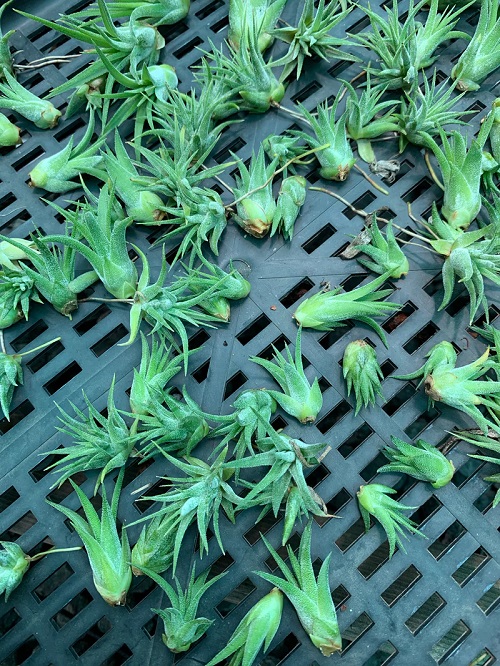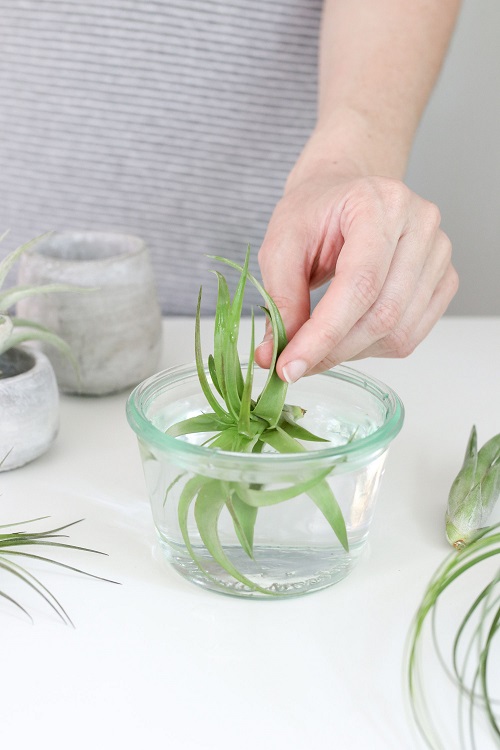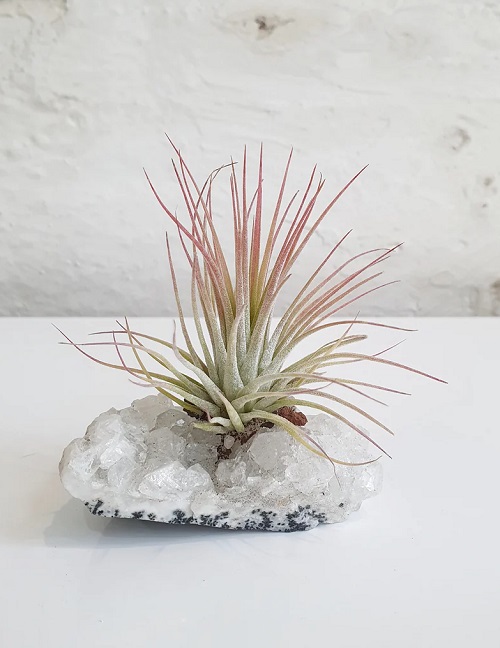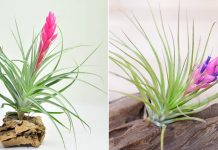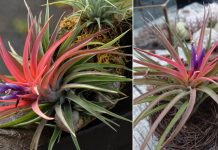Learn How to Grow Air Plants from Seeds; read step-by-step tips for nurturing these unique and low-maintenance plants.
Known for their striking appearance and minimal care requirements, air plants offer enthusiasts a chance to nurture these fascinating organisms from tiny seeds into thriving, mature specimens. Let’s understand How to Grow Air Plants from Seeds and the resilience of these extraordinary botanical wonders from the very beginning of their life journey.
Read About Tips for Mounting Air Plants here
What do Air Plant Seeds Look Like?
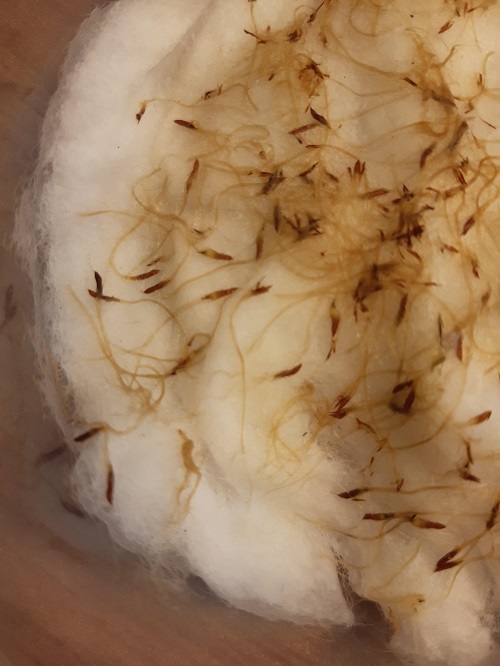
Air plant seeds are small, typically measuring 1 to 2 millimeters in size, and come in oblong or cylindrical shapes. They are commonly brown or black, with a smooth, hard outer shell. These seeds are designed for wind dispersal and are equipped with structures resembling parachutes to help them travel over distances. Air plants produce small seed pods or capsules containing multiple seeds, though they primarily reproduce through offsets or pups at the base of the parent plant.
In cultivation, air plant enthusiasts often prefer propagation through offsets or division due to the challenges associated with the small size and wind dispersal of their seeds.
Check Out Air Plant Stricta Care here
How to Grow Air Plants from Seeds
Growing air plants from seeds can be a fascinating but challenging endeavor due to the minuscule size of the seeds and the unique requirements of these plants. Here’s a detailed guide on How to Grow Air Plants from Seeds.
- Fill the shallow container with your chosen growing medium, leaving about half an inch of space at the top.
- Sprinkle the air plant seeds evenly across the surface of the growing medium. Since the seeds are tiny, you can mix them with fine sand to help distribute them more evenly.
- Cover the container with plastic wrap or a lid to create a humid environment.
- Place the container in a location with bright, indirect light, or use grow lights if natural light is insufficient.
- Once the seedlings have grown large enough to handle, carefully transplant them into small pots or onto a suitable mounting surface. Ensure they are well-secured.
- As the air plants mature, care for them according to the specific requirements of their species. Most air plants need good air circulation, regular misting or soaking, and indirect light.
- Keep an eye on your young air plants as they grow. Over time, they will develop the distinctive appearance that air plants are known for.
Learn About Velutina Air Plant Care here
Tips to Take Care of Air Plants
Light
Air plants thrive in bright, indirect light. Place them near a window with filtered sunlight or under artificial lighting. Avoid exposing them to direct, intense sunlight, as it can scorch their leaves. Inadequate light may lead to poor growth, while excessive light can cause damage.
Temperature
Air plants prefer temperatures between 50°F to 90°F (10°C to 32°C). They can tolerate brief temperature drops but should be protected from frost. Ensure good air circulation to prevent stagnation and moisture buildup. Consistent, moderate temperatures promote healthy growth and prevent stress on these unique plants.
Water
Shower your air plants by misting them 2-3 times a week or soaking them in room-temperature water for 20-30 minutes every 1-2 weeks. Shake off excess water gently after soaking to prevent rot. Adjust the watering frequency based on your local humidity levels. In drier climates, you may need to water more frequently. Avoid using distilled water, as air plants benefit from some mineral content in the water.
Air Circulation
Good air circulation is crucial for air plants. Ensure they have adequate ventilation to prevent stagnation and fungal issues. Avoid placing them in closed terrariums unless there is proper ventilation.
Fertilizing
For optimal air plant care, fertilize with a diluted, balanced, water-soluble, low-nitrogen (10-10-10) fertilizer once a month during the growing season (spring to early fall). Use about 1/4 to 1/2 of the recommended strength, as air plants are sensitive to excess nutrients. Mist the solution onto the plant, ensuring it reaches the base without soaking it.
Mounting and Display
Air plants can be mounted on various surfaces, such as driftwood, rocks, or decorative containers. Use a non-toxic adhesive like clear silicone or plant-safe glue to secure them.
Display your air plants creatively, but ensure they can access proper light and airflow.
Grooming
Remove dead or dried-out leaves by gently pulling them from the base of the plant.
Trim any overgrown roots that may appear, but do not cut healthy leaves or the plant’s core.
Blooming
Air plants produce colorful blooms once they reach maturity. Blooms can last several weeks to several months. After blooming, the mother plant will produce offsets, or “pups.” These pups can be separated once they reach about one-third the size of the parent plant.
Pests and Disease
Keep an eye out for signs of pests like mealybugs or aphids. Treat infestations promptly with neem oil or insecticidal soap. To prevent rot, ensure air plants dry within a few hours of watering and avoid leaving them in standing water.
Read About the Harrisii Air Plant Care Guide here
How Long Does It Take For Air Plants To Grow From Seed?
Growing air plants from seed is a patient gardener’s endeavor, as it can be a slow process. The time it takes for air plants to grow from seed to maturity varies depending on several factors, including the species of Tillandsia and the environmental conditions. Here’s a general timeline:
1. Germination (2-6 weeks)
Air plant seeds can take anywhere from 2 to 6 weeks, or even longer, to germinate. The exact duration depends on the specific species and environmental factors such as temperature and humidity. Some Tillandsia seeds may require a cold stratification period before they will sprout.
2. Seedling Stage (6 months to 2 years)
Once germination occurs, air plant seedlings are tiny and fragile. They will slowly grow, and during this stage, they need to be kept in a humid environment with bright, indirect light. It may take 6 months to 2 years for them to develop into small, mature plants.
3. Maturity (2-5 years or more)
The time it takes for air plants to reach maturity depends on the species and growing conditions. On average, it can take 2 to 5 years or more for air plants to grow into their full, characteristic form, including the development of their vibrant coloration and potential for flowering.
Check Out Air Plant Juncea Care here
Frequently Asked Questions
Q. Can all air plant species be grown from seeds?
Yes, air plants can be grown from seeds, but the success and growth rates can vary depending on the species. Some species are easier to grow from seeds than others.
Q. Where can I buy air plant seeds?
You can find air plant seeds from specialty nurseries or reputable online retailers specializing in air plants and Tillandsia.
Q. Can I grow air plants from seeds indoors?
Yes, you can grow air plants from seeds indoors. Provide them with appropriate lighting and care, and they can thrive indoors.
Q. Do air plants grown from seeds bloom?
Yes, air plants grown from seeds can eventually produce blooms once they reach maturity. The time to maturity and flowering can vary by species.
Q. How do I care for air plants grown from seeds once they are mature?
Care for mature air plants by providing bright, indirect light, regular misting or soaking, and proper air circulation. Follow the care guidelines for the specific species you’re growing.
Q. Can I propagate air plants from seed-grown plants?
Yes, you can propagate air plants by separating the offsets or “pups” that grow from seed-grown plants once they reach a suitable size.

